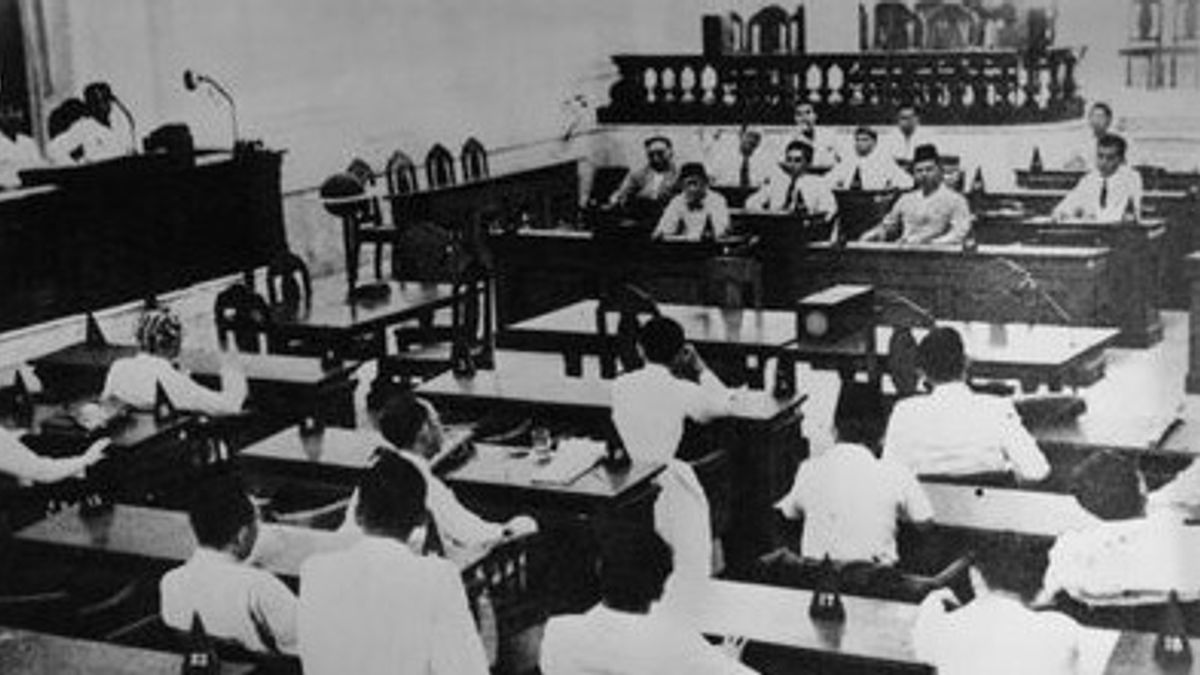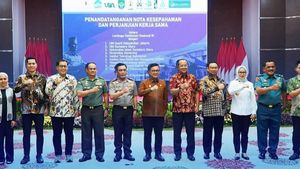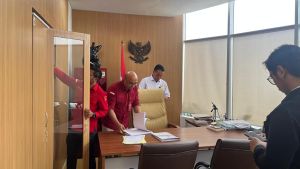JAKARTA - On July 14, 1945, the trial of the Investigating Agency for Preparatory Work for Indonesian Independence (BPUPKI) took place. In the trial, the proposed tax issue was for the first time mentioned and included in the legislation (UU).
At that time, the Head of BPUPKI, Radjiman Wediodiningrat, said that there must be a legal regulation regarding tax collection. According to the Directorate General of Taxes (DGT) of the Ministry of Finance, taxes are mandatory contributions to the state owed by individuals or entities that are coercive under the law.
Simply put, taxes are mandatory levies from the people for the state. The tax is used for various state expenditures, including financing development to paying civil servants' salaries. Since it was mentioned on July 14, 1945, tax matters have been included in the 1945 Constitution.
Tax matters were discussed specifically on July 16, 1945. Taxes were specified as the main source of state revenue and became the main issue of the trial. The mention of taxes for the first time occurred on July 14, 1945 and became the forerunner of National Tax Day.
National Tax Day was established through the Decree of the Director General of Taxes Number KEP-313/PJ/2017 on 22 December 2017. National Tax Day was established to raise awareness of the Indonesian people to pay taxes.
Taxes from the royal to colonial era
Taxes, as a source of state revenue, have an important role in development. Long before the Soekarno government, money levies from the people had been imposed in the name of the interests of all parties.
Launching the book Tax Awareness Open Material for Higher Education by the Directorate General of Taxes, it is explained that the history of taxation in Indonesia is divided into five eras. Starting from the royal era, the colonial era, the era of independence, the New Order era, to the Reformation era.
royal era
At that time it was not only the state that collected taxes from the people, but also religious institutions. People also feel that taxes are a forced obligation.
Lots of resistance. Moreover, taxes are collected and used arbitrarily. Opposition is carried out in various forms of protest movements or physical resistance.
The tax has direct and indirect benefits, namely security protection, financing sacred religious buildings, to financing orphans and various social institutions.
Colonial era
The tax system was designed when British colonialism entered Indonesia in 1811-1816. At that time Sir Thomas Stanford Raffles was the first European ruler to design a tax system. The Raffles taxation system is known as landrent or land tax.
Land taxes are levied on the village. Not individual. Not only with money. Land tax can also be paid in kind. British colonialism ended, the Dutch East Indies colonial taxation system was applied.
There is a difference between the system of collecting land tax by the British colonial government and the Dutch colonial government. The Dutch colonialists gave the position to the regents as tax collectors who were responsible for collecting land taxes to the people.
Residents of China, the West, and traders from other classes were also taxed. In addition, city residents are subject to business taxes, door (house) taxes, head taxes, and others.
Independence era-Old Order
In the era of independence and entering the era of the Old Order government, tax policy from the government has not been widely implemented. This is due to the unstable government condition.
The legacy of the tax collection system in the Dutch colonial era is still being used. However, many people say that this colonial legacy has resulted in the lack of a sense of justice in the application of taxes.
The government of President Soekarno then formed a Tax Review Committee in 1951. This committee was tasked with studying the many types of taxes handled by the Tax Office.
The Tax Review Committee was then divided into four sub-committees: the Indirect Belasting Committee, the Belasting Directive Committee, the General Tax Committee, and the Regional Tax Committee. Furthermore, in early 1965, Soekarno issued Presidential Decree Number 5 of 1965 which contained tax amnesty.
New Order Era
During the New Order era, President Soeharto reorganized the tax organization. This arrangement was stated in the Decree of the Presidium of the Ampera Cabinet of the Republic of Indonesia dated November 3, 1966,
The organizational structure of the Directorate General of Taxes consists of the Director General, the Secretary to the Directorate General, the Directorate of Direct Taxes, the Directorate of Indirect Taxes, the Directorate of Planning and Investigation and the Directorate of Development. Several tax laws were also repealed and replaced by new laws.
Reformation era
During the reformation period, to be precise during the transitional government from President Soeharto to BJ Habibie, policies related to taxation had not changed much.
Policy changes began in 2000. Several changes were made to the tax laws.
Law Number 34 of 2000 concerning Regional Government is the starting point for the development of taxes and other levies by local governments. In this regulation, the terms local taxes and levies appear.
*Read other information about HISTORY or read other interesting articles from Putri Ainur Islam.
TODAY'S HISTORY MoreThe English, Chinese, Japanese, Arabic, and French versions are automatically generated by the AI. So there may still be inaccuracies in translating, please always see Indonesian as our main language. (system supported by DigitalSiber.id)









